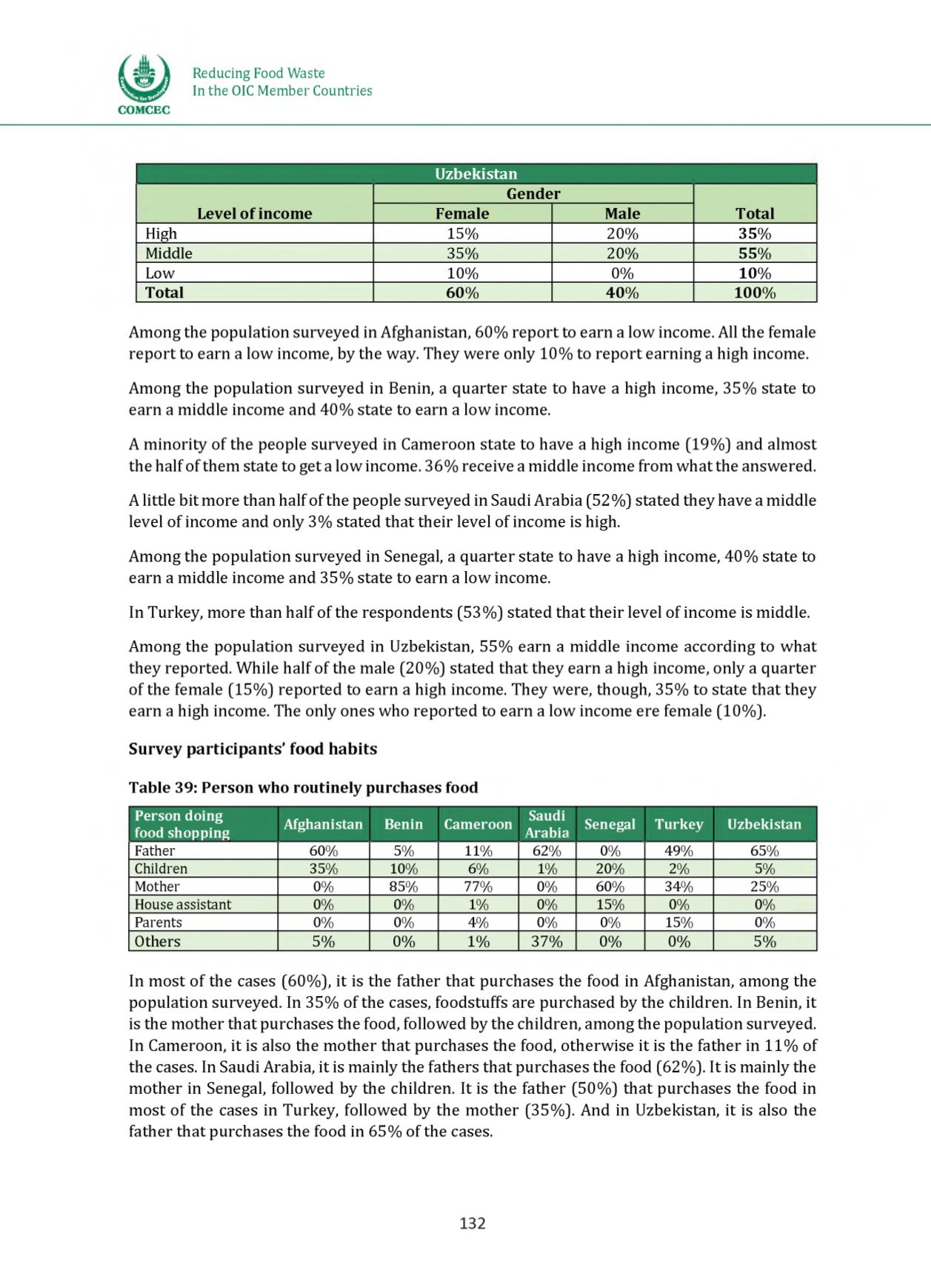

Reducing Food Waste
In the OIC Member Countries
COMCEC
Uzbekistan
Level of income
Gender
Total
Female
Male
High
15%
20%
35
%
Middle
35%
20%
55
%
Low
10%
0%
10
%
Total
60
%
40
%
100
%
Among the population surveyed in Afghanistan, 60% report to earn a low income. All the female
report to earn a low income, by the way. They were only 10% to report earning a high income.
Among the population surveyed in Benin, a quarter state to have a high income, 35% state to
earn a middle income and 40% state to earn a low income.
A minority of the people surveyed in Cameroon state to have a high income (19%) and almost
the half of them state to get a low income. 36% receive a middle income from what the answered.
A little bit more than half of the people surveyed in Saudi Arabia (52%) stated they have a middle
level of income and only 3% stated that their level of income is high.
Among the population surveyed in Senegal, a quarter state to have a high income, 40% state to
earn a middle income and 35% state to earn a low income.
In Turkey, more than half of the respondents (53%) stated that their level of income is middle.
Among the population surveyed in Uzbekistan, 55% earn a middle income according to what
they reported. While half of the male (20%) stated that they earn a high income, only a quarter
of the female (15%) reported to earn a high income. They were, though, 35% to state that they
earn a high income. The only ones who reported to earn a low income ere female (10%).
Survey participants' food habits
Table 39: Person who routinely purchases food
Person doing
food shopping
Afghanistan Benin Cameroon Saudi
Arabia Senegal Turkey Uzbekistan
Father
60%
5% 11% 62% 0% 49%
65%
Children
35% 10% 6% 1% 20% 2%
5%
Mother
0%
85% 77% 0% 60% 34%
25%
House assistant
0%
0%
1% 0% 15% 0%
0%
Parents
0%
0% 4% 0% 0% 15%
0%
Others
5%
0% 1% 37% 0% 0%
5%
In most of the cases (60%), it is the father that purchases the food in Afghanistan, among the
population surveyed. In 35% of the cases, foodstuffs are purchased by the children. In Benin, it
is the mother that purchases the food, followed by the children, among the population surveyed.
In Cameroon, it is also the mother that purchases the food, otherwise it is the father in 11% of
the cases. In Saudi Arabia, it is mainly the fathers that purchases the food (62%). It is mainly the
mother in Senegal, followed by the children. It is the father (50%) that purchases the food in
most of the cases in Turkey, followed by the mother (35%). And in Uzbekistan, it is also the
father that purchases the food in 65% of the cases.
132
















